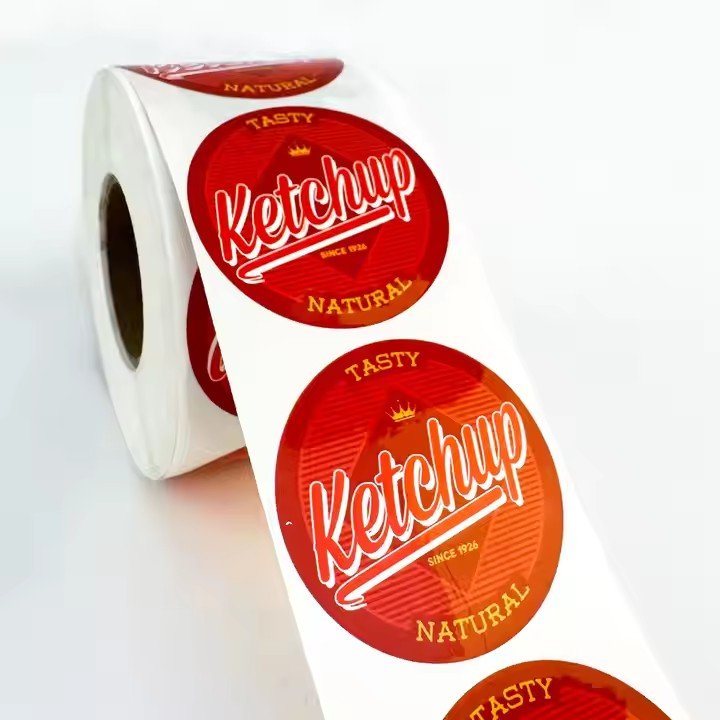Chinese-manufactured labels are still needed in the Australian market due to their competitive advantages. From design to production, China offers more affordable prices and faster turnaround compared to local suppliers. Chinese labels are not only cost-effective but also highly efficient in terms of production speed. However, despite these advantages, there are several key challenges when designing labels for cosmetics in Australia:
- Strict Regulatory Compliance with Complex Details
The foremost difficulty lies in the stringent and detailed legal requirements. Label design must comply with the Industrial Chemicals Act, the Cosmetic Standard, and the National Measurement Institute (NMI) regulations. Any deviation, even minor, can result in product bans or recalls.
Accuracy in Ingredient Listing:
According to regulations, all ingredients must be listed using the International Nomenclature of Cosmetic Ingredients (INCI) and arranged in descending order of concentration (ingredients below 1% can be listed in any order). This requires precise knowledge of each component’s INCI name—especially complex compounds or imported raw materials. Even a small mistranslation or misspelling is considered non-compliant. For example, if a cream contains “Hydrolyzed Collagen” but is labeled as “Hydrolyzed Gelatin” (a non-INCI term), the product may be disqualified.

Mandatory Warnings and Usage Instructions:
Certain ingredients or product types require specific warning statements. Products containing AHA (alpha hydroxy acids) must warn that they may increase sun sensitivity and recommend sunscreen use. Hair dyes must include “Avoid contact with eyes” and “Allergy test recommended.” Claims about SPF or water resistance must match test results within an allowable margin; any discrepancy may be deemed misleading advertising.
Units and Language Requirements:
Net content must be labeled in both metric units (e.g., mL, g) and imperial units (e.g., fl oz, oz). Font size and placement must comply with NMI standards (e.g., for products under 50 mL, font height must be at least 1.5 mm). English must be the primary language. If additional languages (such as Chinese or Korean) are used, the content must exactly match the English version to avoid confusion.
- Balancing High Information Density with Visual Appeal
Australian consumers are more concerned about ingredients, efficacy, and safety than those in many other markets. This necessitates labels that convey a high volume of information—yet too much text can compromise aesthetics and readability, creating a conflict between “information overload” and visual appeal.
Prioritizing Core Information:
Labels must present brand name, product name, ingredient list, usage instructions, shelf life, storage conditions, manufacturer details, warnings, and more. Designers must highlight key elements (e.g., product benefits, skin type suitability) without diminishing required “mandatory information.” For example, if a face cream label visually emphasizes “natural ingredients” too much, the ingredient list may become too small and violate legibility standards.
Cultural Sensitivity in Design:
Australia is a multicultural society. Label visuals must avoid cultural taboos—for instance, certain colors or symbols may have special meanings in Indigenous or immigrant communities. The use of Aboriginal art must be authorized and not misused. Products targeting Asian consumers may include Chinese characters, but fonts must be clear and accurately reflect the English content to avoid misinterpretation due to cultural differences.
Adaptation to Different Packaging Forms:
Cosmetic packaging comes in various shapes—bottles, jars, tubes, sprays—each requiring different labeling techniques. The design must suit curved or irregular surfaces while ensuring readability from all angles. For example, on soft tubes, labels must avoid distortion when squeezed, especially for critical information such as expiry dates.
- Strict Efficacy Claims vs. Marketing Needs
Australia imposes tight restrictions on cosmetic efficacy claims, banning any medical terminology like “treat” or “cure.” All claims must be scientifically validated, which limits how brands can communicate product value while avoiding regulatory risks.

Blurred Lines Between “Claims” and “Descriptions”:
The law allows sensory claims like “moisturizing” or “soothing” but prohibits medical implications like “relieves eczema” or “repairs sensitive skin.” For example, a face mask claiming to “reduce redness” must provide dermatological test data showing it only offers temporary relief, not treatment—otherwise it could be considered non-compliant.
Use of Terms Like “Natural” and “Organic”:
If a label uses terms like “natural” or “organic,” it must meet the standards set by the Department of Agriculture or certified third parties (e.g., ACO certification). The percentage of natural ingredients must be clearly declared (e.g., “95% naturally derived”). Products without certification using these terms may be seen as false advertising and face heavy fines.


